I would rate red mites as being one of the biggest problems you will face when keeping chickens. Red Mites live in the cracks of chicken houses (typically under perch ends) coming out at night, crawling onto your birds for a feed.
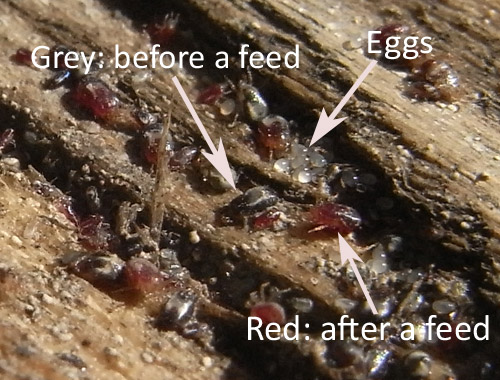
Macro shot of Red Mite in a crack on a perch. These were disturbed after a treatment with Poultry Shield.
They start off as very small greyish-white mites that swell up into red coloured mites after a feed and at their biggest are only 1mm so small numbers of them can be hard to spot unless you know what to look for.
You will often find a grey ash like deposit around perch ends which is where the mites have been and if you lift the perch, you will see clumps of mites.
Red Mite in chickens’ houses are active during the warmer months, usually May to October and will become dormant over the winter. They multiply at an incredible rate: their life cycle is just 7-10 days. In other words from hatching from an egg to being an adult laying hundreds of eggs takes just a week if conditions are right.
Be Proactive.
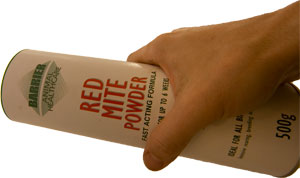 The best course of action is to check for red mite routinely when you clean your chicken house out and use some preventative treatment to the house before they get a hold. You will get to know the places to look and once you have found small numbers of them, you can treat the house to keep numbers under control. See my ‘preventative measures’ below
The best course of action is to check for red mite routinely when you clean your chicken house out and use some preventative treatment to the house before they get a hold. You will get to know the places to look and once you have found small numbers of them, you can treat the house to keep numbers under control. See my ‘preventative measures’ below
Are there Red Mite in your Chicken House?
People normally discover Red Mite when they are over-run by them. When hens are being bitten, they can refuse to go in to roost at night, they will become anaemic and their combs will go pale. They will often stop laying and you may find red blood stains on eggs (squashed Red Mites). Eventually, you will start to see losses in the flock.
Checking for Red Mite in Chickens Houses
Red Mite will hide away in the daytime but can often be seen if you lift perches, examining the ends. They will usually come swarming out if you treat the cracks with Poultry Shield but by far the easiest way to check to see if there are red mite is to take a piece of white kitchen roll and to rub it along the underside of the perch when your hens are roosting (in the dark). Look at the tissue and if there are Red Mite heading back from their feed, they will be squashed on the kitchen roll as streaks of blood.
Getting rid of Red Mite
It is very hard to get rid of them completely so it is often better to get the numbers down and then find a way of keeping them down that doesn’t involve you spending hours on cleaning the house out. There are lots of different treatments that people use, some more effective than others but I will focus on what I do and have found to be the most successful for me.
If you haven’t got red mite and the weather is warm enough for them (May to October in the UK) then skip step 1 and go straight to step 2. Preventative Measures.
1. Getting rid of an infestation.
If you find lots of red mite in the coop, it’s time for a big clean up that will take a couple of hours initially, then an hour every 5 to 7 days for at least 2 more weeks.
The products I have found to work the best (that are relatively safe) are Poultry Shield and Diatom. These two are not ‘knock down’ products as such, they do take a little while to work but are none the less very effective. I also use Red Mite Powder on the hens themselves to help them through the night when the Mites are active.
You can BUY Poultry Shield from Amazon Here.
Here is what I do with the Poultry Shield.
- Remove all birds from the house.
- Strip the house down as much as possible.
- Clean the house out – be careful where the bedding is going as red mite live for 6 months without a feed and will find a new home If they can. Ideally seal the bedding in bin bags or burn.
- Mix up as many watering cans of poultry shield mixture as is needed, as per the instructions on the label 1 part to 9 parts water.
- ‘Water’ all cracks in the chicken house, concentrating where there are perch ends and concentrations of red mite.
- Leave to soak for 15 minutes
- Red mites will be coming out. Cover them and the cracks with poultry shield again.
- Wait 15 minutes
- Hose out the house, concentrating on getting the pressure jet into the cracks and so on.
- Leave the house to dry.
Poultry Shield is a mild detergent and ‘washes’ the waxy coat off the red mites. It is also good for removing organic matter from the hen house so is useful for cleaning. I wouldn’t be without this!
After using the Poultry Shield, when the house is dry, I use Diatom. Diatom is made of micro skeletons of fossilised remains of diatoms. These were once a kind of algae found in water. They are microscopically sharp and pierce the outer waxy coating of the mites which causes them to dry out and die.
The second step also double up as my ‘preventative’ measures if you haven’t yet got a bad infestation
You can BUY Diatom from Amazon HERE
2. Preventative Measures
- Dust the ends of the perches / nest boxes and where ever else you found concentrations of red mites when cleaning.
- Rub as much into the perches as you can. Red mite will avoid the diatom and will crawl around it if they can, so make sure they have to crawl through it to get a feed.
- Repeat every couple of days for as long as you see signs of red mite in the coop.
Repeat the whole cleaning process if there are still lots of mites in 5 to 7 days. You will find you might not need to spend as long on the washing as there won’t be as many mites.
Very Important: Make sure you repeat it before 7 days so that the mites don’t have a chance to lay more eggs. A few mites become a lot in a very short space of time!
If you have a felt roof on your chicken house and they get underneath, it is usually impossible to get rid of them without removing the felt, cleaning and re-felting. My page on Chicken Houses gives more information.
Finally, I will dust the hens down between their feathers with Red Mite Powder to give them some respite during the night when the mites are active.
Beware of what you read!
There is a lot of information written about these troublesome ectoparasites on the internet these days, much of it re-written and re-spun. When I started writing about them, there was little available online. Strangely, some small errors that I had introduced on my page that I corrected in an update pop up frequently on other websites. Running a Google image search often uncovers companies that have used my copyrighted images! I make regular checks to try to stop this from happening.
If you wish to learn more about red mite then I would encourage you to read the guide to red mite on poultrykeeper.com. This is a reliable source of information and is regularly updated.

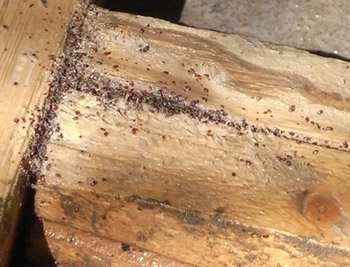
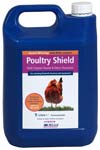
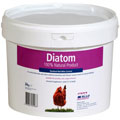
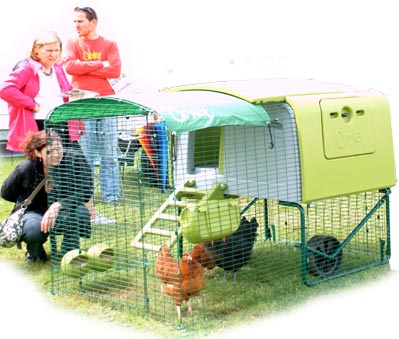
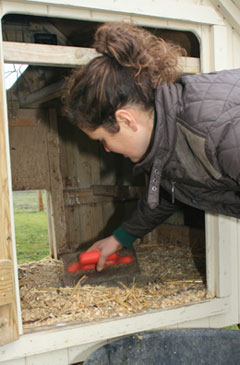
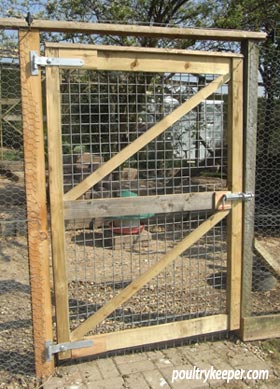
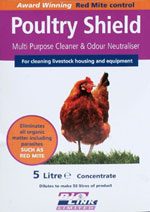
Hi all. When I rescued my ex battery hens, I was told to prepare for an imminent attack of red mite, as the bats sheds were endemic with them. What I do is after brushing out the coop, I spray a strong solution of Jeyes Fluid all around, leave to dry, then make up with fresh litter- and I have never had a red mite attack to date!! Also, a colleague, who has been keeping hens for years told me about good old table salt, after removing the soiled litter, simply brush some salt in all the crevices, and as he says, it costs pence for a good sized bag, is easy to apply, and he never suffers the annual onslaught of red mite. I have employed this tactic as well as Jeyes Fluid, as two plans can only be better than one.
ive won the red mite battle,,, as i said before i jet washed then the gas torch then i rubbed mite powder all over every thing especially on perches and the ends of perches,and heavy round the edges and joins in nesting area. I clean the straw out ,sweep and replace the straw every sunday and dusted with mite powder every 2 days and seemed clean within a week of last post so i think ive won…whoopee…… I lost 2 birds but now the rest are lokking healthier and combs are bright red now ,and as it is now winter their new feathers are growing through and they are looking tip top bless them . good luck every one with your birds.
ps,,,,,, 8 birds and still at least 1 egg each day even now in november ………
I hope this is the case – now that the temperature has dropped, red mite go dormant and can’t usually be spotted… that is until April / May next year when the weather warms up – so be on your guard then…
Hi!
I found red mite about a month-ish ago in my ark and didn’t have clue what it was, as I was new to keeping hens i asked my neighbour who’s they where before what this could be. He said if the chickens don’t seem bother by it than don’t worry about it. Until a couple of weeks ago my friend told me to watch out for red mite. So realised I had them. He told me what stuff to get for them as he found this very effective when he used to have chickens. Organic red mite powder (I couldn’t find anything organic) and Liquid horse fly pesticide. But from reading everyones comments and suggestions I have dont this wrong 🙁 I was wondering why they where still there and its November now.
They will become dormant as the temperature drops – but we’ve had such mild weather….
I had red mite in my flock. I treated with poultry shield and dusted my flock down with red mite powder. I had some old creosote which I treated all the perches and nesting boxes. It seems to have eradicated the little devils but the hens still look anemic and the egg production is poor to say the least. I also notice there is a grey ash substance in the hen house over the droppings and perch. What could this be?
Normally the grey ash like substance is excretia from the mites – it’s usually found where the red mites are though on perch ends etc, not on droppings.
I have just found red mite in my coop, I have got the necessary stuff to treat it with. I have got a fumer, poultry shield, and diatom. What I was worried about was I understand I have to soak the coop with the poultry shield and leave it to dry but in this weather its not going to dry even if i do it quite early in the day. What do you suggest?
Red mite go dormant in the cooler months – so by now there shouldn’t be much activity anyway. Poultryshield is essentially a detergent so is very safe to use. They say on the literature that you can treat the house with the chickens still in it… Whilst I wouldn’t do this, I think I would be happy cleaning out the coop with it, early morning, then before dark putting shavings back in and letting the girls roost. The coop should have good ventillation anyway in theory too. I hope this helps.